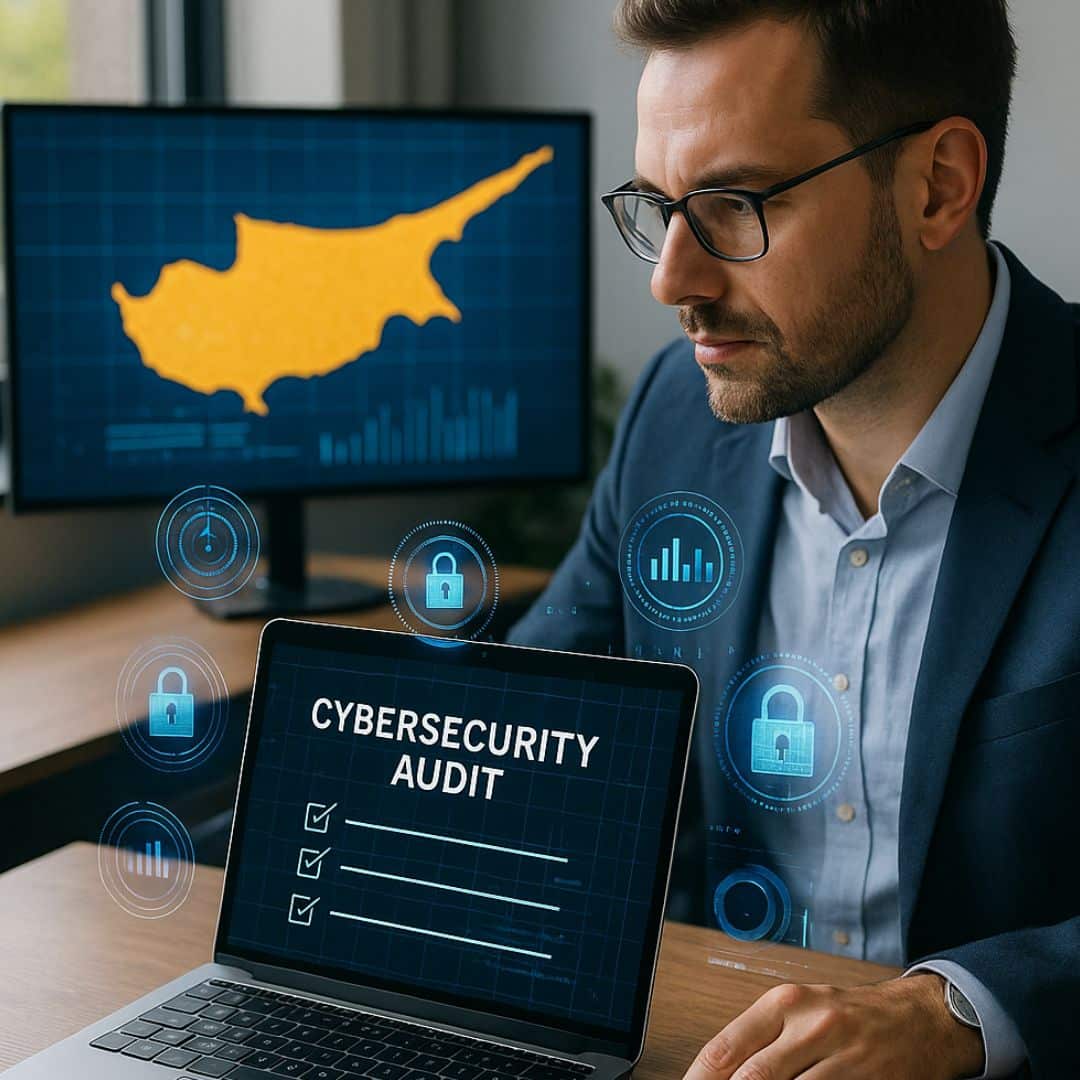For small and medium-sized businesses (SMEs) in Cyprus, cybersecurity audits are no longer a formality — they’re a necessity. With increasing threats, evolving regulations, and rising client expectations, being unprepared can leave your business vulnerable.
Whether you’re aiming for ISO 27001 compliance or just trying to strengthen your IT security posture, this guide will help you get audit-ready — with practical steps, tools, and a free 30-point audit checklist available at the end of this article.
Why Cybersecurity Audits Matter More Than Ever

Cyber threats are no longer confined to large corporations. In fact, SMEs in Cyprus are increasingly targeted due to limited resources and weaker protections. A cybersecurity audit helps you:
- Identify critical security gaps before attackers do
- Prove compliance with regulations like GDPR and ISO 27001
- Strengthen client trust and reputation in your industry
To understand the urgency, read our recent post:
5 Critical Cybersecurity Threats Facing Cyprus Businesses in 2025
What to Expect in This Audit
They typically examine three key areas of your IT environment:
1. Governance & Policy Readiness
- Do you have documented security policies?
- Are roles and responsibilities clearly assigned?
- Are policies reviewed and updated regularly?
2. Technical Infrastructure & Controls
- Firewalls, antivirus, endpoint protection
- Data encryption and secure configurations
- Patch management and vulnerability scans
- Backup and disaster recovery systems
3. Human Factor & Awareness
- Cybersecurity training for all employees
- Phishing simulation and incident response readiness
- Documented awareness programs
Curious how we’re helping other Cyprus businesses strengthen security?
Check out our partnership with CyberSift:
ACE Networks x CyberSift: 5th Cybersecurity Conference in Cyprus
How to Prepare for The Audit: A Comprehensive Guide
Step 1: Review All Current Policies
Make sure you have updated policies for:
- Acceptable use
- Data retention and access
- Remote work and BYOD
- Password management and multi-factor authentication
Step 2: Conduct a Risk Assessment
Identify which systems and data are most vulnerable. Classify assets by risk level and prioritize protection efforts accordingly.
Step 3: Audit Your Technical Infrastructure
Run internal scans, check patch status, and validate configurations. If you use automated threat detection like CyberSift, ensure your logs and reports are up to date.
Step 4: Validate Your Incident Response and Backup Plans
Ensure your team knows exactly what to do in the event of:
- A ransomware attack
- A phishing breach
- A system failure or data loss
Your backups should be encrypted, automated, tested regularly, and stored offsite.
Step 5: Train Your Staff
Human error is still the top cause of cyber breaches. Schedule regular security awareness training and keep records of attendance for your audit file.
Get the Free Audit Checklist
We’ve created a 30-point audit checklist tailored for Cyprus SMEs to help you prepare. It covers policies, infrastructure, compliance documentation, and staff training — everything an auditor will expect.
→ Click here to download the checklist instantly (PDF)
Need Help Preparing for Your Audit?
If you’re short on time, expertise, or internal IT support — you’re not alone. ACE Networks helps SMEs across Cyprus navigate audits, implement ISO 27001, and strengthen their cybersecurity posture.
Or read more about how we’re transforming threat detection across the island:
CyberSift Partnership with ACE Networks

